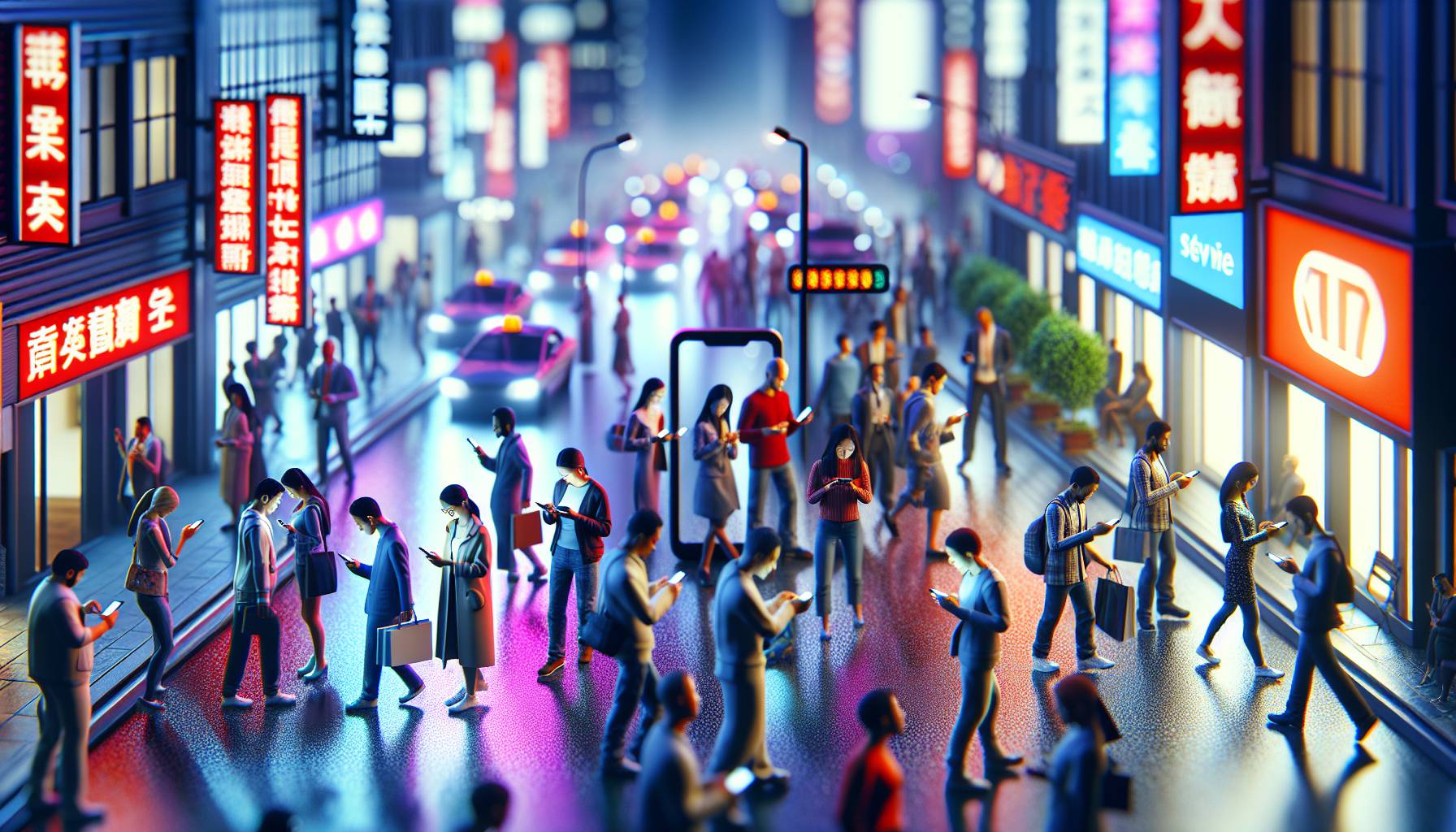Understanding Your Target Audience

You’ll see it when you go out. Whether it’s a bar, a club, or even the local café, there will always be two strangers staring at each other who think they’re speaking the same language. But, under the surface, not really.
These people could be you and your customers if you’re not careful. Here’s a thought. Imagine your audience is in a room filled with so much noise that they can’t hear themselves talk.
That’s what shopping online is like right now. There are rarely so many options and so much information around that people can feel overwhelmed and lost about what they want to get or where they want to get it from. I think it’s become nearly impossible for customers to make decisions on a platform that doesn’t offer them a guided journey toward getting what they want.
It all boils down to knowing what the people who frequent your store would want from your store. And then building an experience that fits their needs the best. Your store should help them answer three things: What are you selling. Do I need it.
What makes you better than the alternatives. You need to design your store so it clearly tells your customer what they’re buying, why it matters, and why they should buy it from you versus someone else. It feels odd to say this, but shoppers don’t really look beyond these essentials when deciding on brands that speak to them.
Your customer might have grown up in an era where what mattered about clothes was how long it lasted and whether or not it fit like fashion should. But today, things are evolving faster than ever before. Why something is made is just as important as how well it's made and who gets to wear or use them.
Customers in 2024 care about where their money goes just as much as they care about who gets access to premium quality experiences they would associate with their own standards of living.
Streamlining Navigation for Enhanced User Experience

Looks Like we have all been in a situation where we are completely lost because there are absolutely no signs around to help us figure out what direction we need to head towards. Imagine experiencing this, but virtually on an online store with no proper navigation in place. This is something that happens more often than one might think.
A positive user experience begins with allowing your customers to easily get from point A to point B with no friction, and it would be wise for brands and businesses to keep their customers’ behaviour patterns and motivations in mind when streamlining navigation. Nothing beats being able to find exactly what you’re looking for without having to spend more than two minutes searching for it.
With the introduction of AI tools and automation, this is also easier now than ever before. From using the right keywords that have shown results in previous searches, to creating an interface that minimises confusion as much as possible - there are several ways to ensure a seamless navigation experience that leaves your customer coming back for more. This applies whether they are visiting your website on their desktop or a mobile device, so don’t forget about responsive design. One thing I have noticed when shopping online is that some websites require you to create an account before checking out and completing your purchase, which can be mildly annoying if you’re looking for a quick buy.
While this has certainly made me leave some websites without purchasing anything, a good solution would be to allow account creation post-purchase. This way, a brand can still create conversions while leaving a good impression on the customer by not disrupting their experience with unnecessary steps that could just as well happen at another time.
The Importance of Visual Hierarchy in Design

Picture walking into a massive department store with racks and shelves everywhere - and no signs for where to find anything. The racks seem like mazes, the shelves are two-aisle-high deep, and the only way to locate what you want is to go through the entire thing. It would be overwhelming. In this situation, finding what you want can take up anywhere from hours to days depending on how many times you make mistakes along the way.
The way I see it, it’s a crucial aspect in design that is often overlooked, visual hierarchy is about more than keeping pages pretty. In fact, it’s so important that it’s built on scientific research – even if you don’t realise it. Visual hierarchy is rooted in the way we perceive things. While beauty may lie in the eye of the beholder, good hierarchy relies on science.
There are multiple studies done on how our eyes move when looking at something. For example, a study done by the Stanford Persuasive Technology Lab found that “visual design had the highest correlation with perceived credibility” making it one of the most effective ways to communicate with your audience. By organising information and actions by their level of importance for the user - visual hierarchy builds a framework for users to navigate through your store with ease. If done right, finding information on your e-commerce website feels intuitive - like something inside your brain keeps guiding you to what you're looking for.
Mobile Responsiveness: Adapting to On-the-Go Shoppers

I can’t remember the last time I got in bed, popped on an episode of whatever-Netflix-thinks-I-should-watch-next and scrolled through a website on my laptop. Well, not unless I’m working. Mobile shopping isn’t a luxury or even a convenience anymore, it’s our default.
Who knew that was coming. For mobile UX to be excellent, it must be responsive. Users need to feel like they’re having the same great experience on their phone that they might have had on a desktop or laptop - albeit in bite-sized versions. That means your design needs to move with them when they turn their phone around from portrait to landscape and back again.
Fonts and images should change size to fit the new orientation too. If you want your customers to take an action, then make it simple for them to do so. Buttons must be easy to read and click. Checkout flows must be clear and effortless to follow - minimal field forms are preferable over detailed ones (especially if you’re targeting impulse shoppers).
The mobile checkout is another good place for you to showcase your guest checkout option which can help reduce cart abandonment rates. Don’t neglect the subtle bits either - these can make a massive difference. Pages should load fast, preferably in under two seconds as this can also impact SEO scores on Google search results pages.
Your page layout should help people find what they’re after quickly and easily. More or less. In-app chat support is another great feature worth adding (with an automated chatbot or even a basic FAQ section that doesn’t require you to answer questions).
Leveraging Customer Feedback for Continuous Improvement

Sounds Like imagine this: you walk into a beautifully designed store, keen to spend a lazy afternoon browsing, only to find the music so loud you can’t hear your own thoughts. You mention it to the cashier. They smile politely, but nothing happens. Next week, same store, same headache-inducing music.
You just don’t go back. It’s one thing to put a suggestion box on the counter or say “Let us know if you need anything. ” as people enter your shop.
But it’s quite another to be receptive and act on feedback in real time. Customers notice if you take their comments seriously or not. And I think it’s fairly obvious that those who make a change based on customer feedback - whether it’s the temperature of the store, a new product they want to see more of, or something else - keep their customers happier and coming back for more.
Getting the feedback is easy - well, easier than ever before at least. A quick Google form or comments section on your website; maybe an old fashioned phone call; even direct messages on Instagram - there are hundreds of ways that customers can reach out to share their experience with your brand and what they’d like to see improved. The tough part is implementing that feedback (especially when customers contradict each other. Sort of.
). It’s never easy hearing criticism of something you’ve worked hard on but being receptive and open minded (and aware enough to know when feedback doesn’t apply) is essential. Finally, while no one expects you to make changes immediately based on every customer’s whim (nor should you), communicating what changes you are making, when customers can expect them, why some things might not be possible, all goes a long way in building trust and respect with your customers. Like any relationship worth having, this too requires communication and effort from both parties involved for there to be mutual appreciation and growth.
Integrating Technology: Tools to Elevate the Shopping Experience

Halfway through a shopping session, and after having flitted from shop to shop and feeling like a busy bee, what’s the one thing I look forward to. It’s that little feeling of satisfaction when my phone buzzes and tells me where to find stores that match my taste. The role technology plays in engaging customers can be quite undervalued, if you ask me. And sure, online shops are great because we don’t have to deal with people, but there is something rather nice about being present around other actual human beings.
Digital signage has become fairly prominent in physical stores in recent times. It displays not just store information - but also ongoing discounts, offers and current trends. It also acts as a notification board for local events to keep things relevant for the user.
The existing consumer base is sometimes familiar with technology, and integrating it with unique solutions for retail stores brings about increased customer engagement. What it also does is collect valuable data that helps stores better understand consumer behaviour.
This includes footfall on certain days or at certain times of the day to smart sensors that count the number of people entering the store, even anonymous facial recognition for target advertising. This not only makes for better business opportunities and better impact on the bottomline, but also lays a more appealing foundation for what could potentially be a lasting customer-brand relationship. Integrating technology into design and experience can completely transform how stores operate in this day and age.


